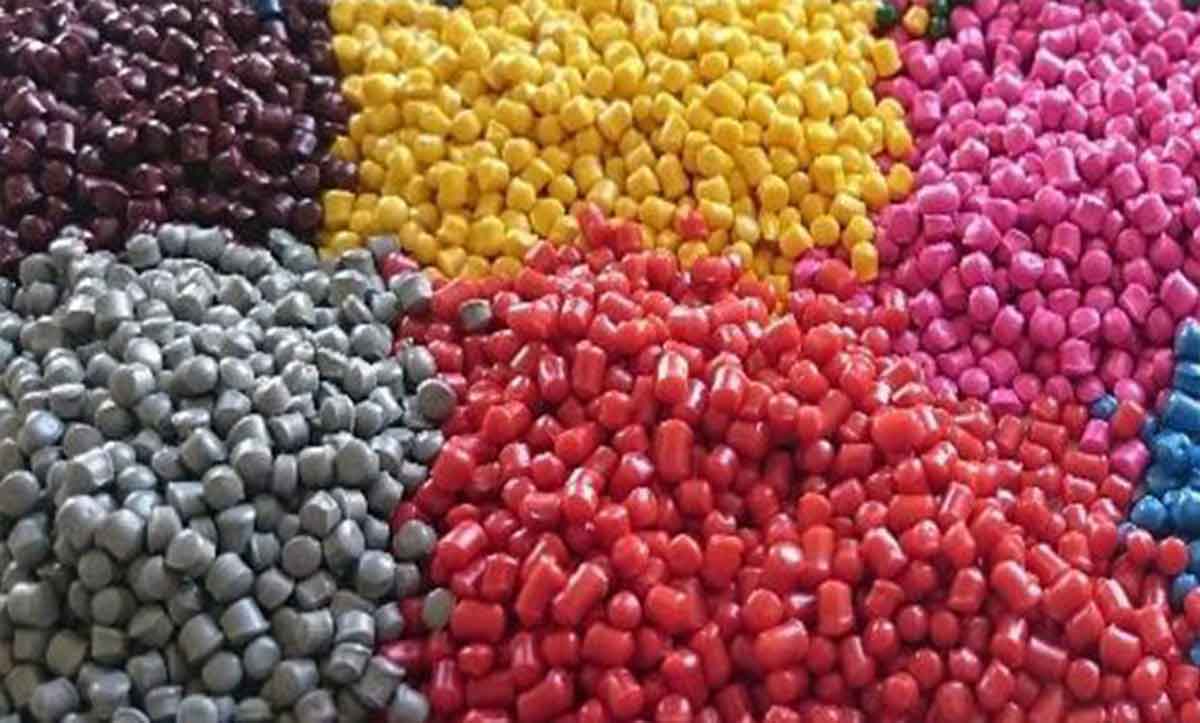What is polyethylene?
Heavy polyethylene
(High-density polyethylene) (HDPE)
Polyethylene is obtained from oil. Approximately every 1.75 kg of crude oil produces one kg of heavy polyethylene, which is recyclable. And it must be said that the most common and most widely used and perhaps the first type of plastic that was created was heavy polyethylene (HDPE). The molecular chain in this type of polymer is compact, which increases its density. Therefore, flexibility is greatly reduced. Although this type of polymer has less impact resistance than lightweight polyethylene, its resistance to chemicals is as good as its resistance to brittle environmental stresses. Therefore, this type of polymer is used in a variety of commercial products such as fuel containers, outdoor chairs, toys, luggage, high pressure water pipes, sewer pipes and ducts. There is another type of high density polyethylene called UHMWPE, which is less common. This type of polymer is harder and harder than other types of polyethylene.
Polyethylene was first synthesized by chance by the German chemist Hans Von Pechmanv. In 1898, while heating diazomethane, he synthesized a white waxy compound later called polyethylene.
Polyethylene was first discovered by industrial synthesis by chance in 1933 by Azic Navest and Rinnollergison (ICI chemists). The two scientists obtained wax-like substances by heating a mixture of ethylene and benzaldehyde at high pressure.
. The types of materials used in these products include water supply pipes, sewage and industrial pipes, making toys, sports equipment, heavy polyethylene film, mineral water containers and household drinks. . . Named
Heavy polyethylene is initially uniform, pure, but opaque, non-colored, and pigments are added if necessary. These materials are used in white, red, blue, yellow, green, black and sometimes even the color of their raw materials. They are electrical insulators and will be destroyed by direct heat.
Other names: ethylene homopolymer, ethylene homopolymer, ethylene polymer
Polyethylene low density (LDPE)
Other names: ethylene homopolymer, ethylene homopolymer, ethylene polymer
This polyethylene has branched chains so LDPE chains can not bond well together and have weak intermolecular strength and less tensile strength. This type of polyethylene is usually produced by radical polymerization. One of the properties of this polymer is its flexibility and the possibility of decomposition by microorganisms. Polyethylene has a low density in terms of low and molecular density, which increases its flexibility. This property has led to more than fifty percent of the production of this product in the manufacture of films and sheets for use in transparent gold-plated coatings, packing liners. , Covers and suitcases to be consumed. This type of polymer is also used to make containers such as pressurized bottles. Other uses are lightweight polyethylene, wire and cable insulation, and paper wrappers. Polyethylene was first synthesized by chance by the German chemist Hans Von Pechmanv. In 1898, while heating diazomethane, he synthesized a white waxy compound later called polyethylene. The first method of industrial synthesis of polyethylene was accidentally discovered in 1933 by Azic Navest and Rinoelergison (ICI chemists). The two scientists obtained waxy substances by heating a mixture of ethylene and benzaldehyde at high pressure. The reason for this reaction was the presence of oxygenated impurities in the devices used, which acted as a polymerization initiator. In 1935, Michael Perrin, another ICI scientist, developed the method and synthesized polyethylene under high pressure, which became the basis for the industrial production of LDPE in 1939.
Uses: Production of polyethylene pipes, making small containers, making household utensils, toys, covering electrical and telecommunication wires, films, various car parts, sports and laboratory equipment and industrial parts
LLDPE
Other names: ethylene homopolymer, ethylene homopolymer, ethylene polymer
The density of this type of polyethylene is also lower than light polyethylene. This type of polymer shows better strength and tensile resistance against tearing and perforation. North America, Asia, and the Pacific are the world’s largest producers of polyethylene, with the exception of Japan and Western Europe. The production of this polymer in 1998 amounted to 10.9 million tons, which increased by 6.2 percent in 2003 to 14.8 million tons and is projected to reach 19.5 million tons per year in 2008. But something that sounds interesting. That is, linear polyethylene has been considered for many years due to its unique properties and has undergone a growing trend in production. Polyethylene was first synthesized by chance by the German chemist Hans Von Pechmanv.
In 1898, while heating diazomethane, he synthesized a white waxy compound later called polyethylene. The first method of industrial synthesis of polyethylene was accidentally discovered in 1933 by Azic Navest and Rinoelergison (ICI chemists). The two scientists obtained waxy substances by heating a mixture of ethylene and benzaldehyde at high pressure. The reason for this reaction was the presence of oxygenated impurities in the devices used, which acted as a polymerization initiator. In 1935, Michael Perrin, another ICI scientist, developed the method and synthesized polyethylene under high pressure, which became the basis for the industrial production of LDPE in 1939.
Uses: Types of films, agriculture
Physical and chemical properties:
Density: 0.92 g / cm3 / Surface hardness: SD48 Max. / operating temp: 50 ° C / Melting Temp: Range 120 to 160 ° C / Mold Shrinkage: 3% / Mold temp. range 20 to 60 ° C
Production methods: Ethylene polymerase reaction with long olefin chain




